Maverick Medical Education is focused on teaching and training as many medical professionals the skills and techniques needed to alleviate the pain of their communities and within their practices. To do so, we have thought out the best way for physicians, practitioners, nurses, and others to learn from our expert team. By using our flipped classroom model, there is automatic access to the content of our curriculum, allowing for flexibility in learning. That said, medical training needs hands-on practice in order to learn the procedures and develop proficiency.
1. Input and resistance. While there is some information that can be learned from watching videos and reading pages about a procedure, there is nothing that can compare to hands-on training. By practicing on high quality pulsatile cadavers and human subjects, students will not feel similar resistance and feedback, they will be able to feel the exact resistance and feedback that they will in their hospitals or offices.
2. Learning styles. Different students learn in different ways. Some students need the visual experience of seeing a method or procedure in person. Other students need hands-on practice for tactile input. Yet others are kinesthetic learners and are better prepared by doing the procedure themselves. Our in-person time of each course offers that for students who need it. By reaching several different learning styles, we are better meeting the needs of those who sign up for our courses. Because the courses come with modules that “front load” the content information, even learners that are more comfortable in a traditional learning setting get their knowledge reinforced.
3. Practice makes progress. We want our students to be comfortable performing skills they learn at one of our courses as soon as they leave our course. To do that, we allow for repetition, with our Maverick instructors demonstrating proper form and technique, then having students step in and perform the procedure. Each time the procedure is repeated, muscle memory is further engrained, and the technique will be easier for our students to perform in their clinical setting.
4. It’s in the details. There is a fair amount we could teach our students from videos. However, there is even more we can teach in person. By meeting and doing continuing education in person, we are allowing for all of the minute details that make our Maverick instructors so valuable, come into play. It is challenging to convey the exact angle or amount of pressure needed for certain blocks or procedures in a video. By showing this in person, students can easily see and understand what best practices are.
5. Question and answer. While questions can be asked at any time during a learning process, we find that in-person training allows for a more complete time of questioning and answering. Not only do students usually come up with more questions during our in-person time, but their questions may trigger questions for other students in the same course. This back and forth is crucial to the learning process. Additionally, we find that we, as instructors, will learn more about student needs, or we may remember little tips and tricks that we need to include in our courses based on what they are needing additional clarification on.
To learn more about the courses we offer, contact us today. If you are ready to sign up for one of our courses, you can do so and begin learning during your online modules now. Maverick Medical Education provides the learning you need to provide pain relief or Point of Care Ultrasound techniques for your clinical setting.

